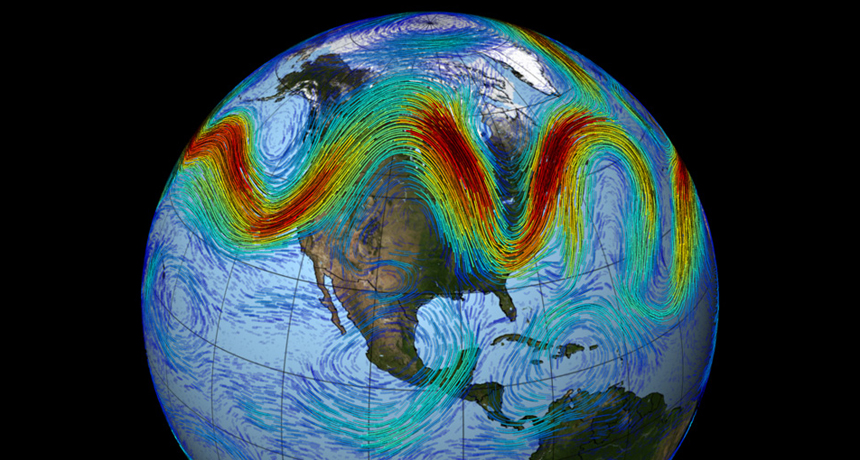Wavy jet stream linked with extreme weather

Big waves in the jet stream can push cold Arctic air farther south and warmer air farther north, increasing the chance of temperature and precipitation extremes.
NASA

Big waves in the jet stream can push cold Arctic air farther south and warmer air farther north, increasing the chance of temperature and precipitation extremes.
NASA